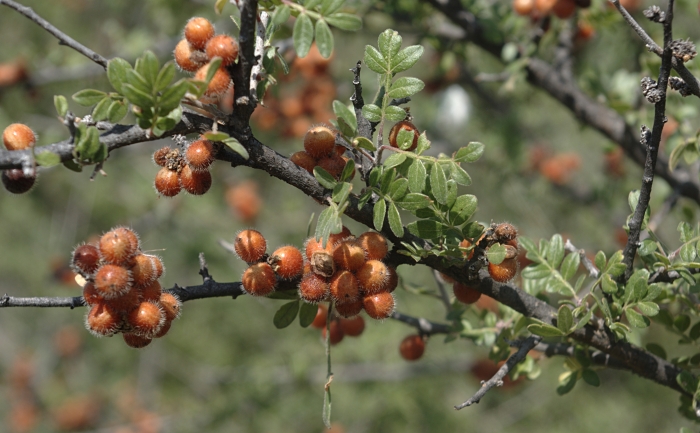Littleleaf Sumac
(Rhus microphylla)
Littleleaf Sumac (Rhus microphylla)
/
/

JerryFriedman
CC BY-SA 3.0




















































Estimated Native Range
Summary
Littleleaf Sumac is valued for its drought tolerance, low water requirements, and ability to thrive in poor, well-drained soils. It is often used in xeriscaping, naturalistic plantings, and as a wildlife attractant for its berries, which provide food for birds. It is also appreciated for its ornamental qualities, including its textured foliage and the warm, reddish hues it adds to the landscape in autumn. In cultivation, it requires full sun to maintain its compact form and prolific flowering and fruiting. While generally disease-free, it can occasionally suffer from root rot if overwatered. Littleleaf Sumac can spread by suckers, forming thickets if not managed, which can be a desirable trait for erosion control but may require maintenance in a garden setting.CC BY-SA 4.0
Plant Description
- Plant Type: Shrub
- Height: 5-8 feet
- Width: 4-6 feet
- Growth Rate: Moderate
- Flower Color: N/A
- Flowering Season: Spring
- Leaf Retention: Deciduous
Growth Requirements
- Sun: Full Sun
- Water: Low
- Drainage: Fast
Common Uses
Bee Garden, Bird Garden, Butterfly Garden, Deer Resistant, Drought Tolerant, Edible*Disclaimer: Easyscape's listed plant edibility is for informational use. Always verify the safety and proper identification of any plant before consumption., Fire Resistant, Hummingbird Garden, Low Maintenance, Rabbit Resistant
Natural Habitat
Native to desert scrub, chaparral, and grasslands
Other Names
Common Names: Desert Sumac , Scrub Sumac , Small-Leaf Sumac , Correosa
Scientific Names: Rhus microphylla , Rhoeidium microphyllum , Rhoeidium potosinum , Rhoeidium cinereum , Rhoeidium glabellum , Rhoeidium retusum , Rhoeidium rugulosum , Rhus microphylla var. vestita , Rhoeidium vestitum , Schmaltzia microphylla
GBIF Accepted Name: Rhus microphylla Engelm.